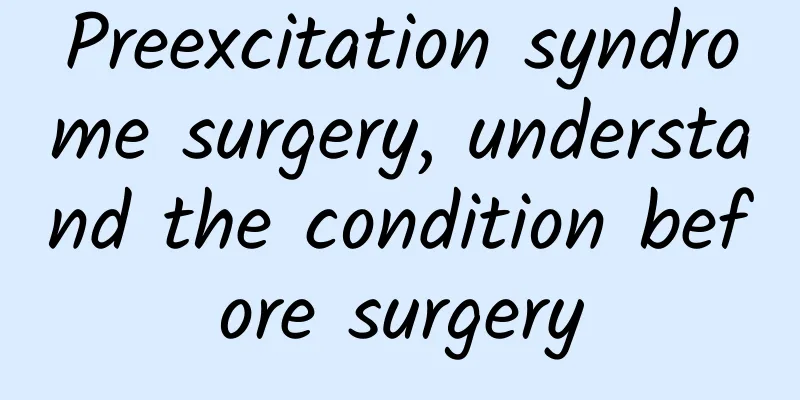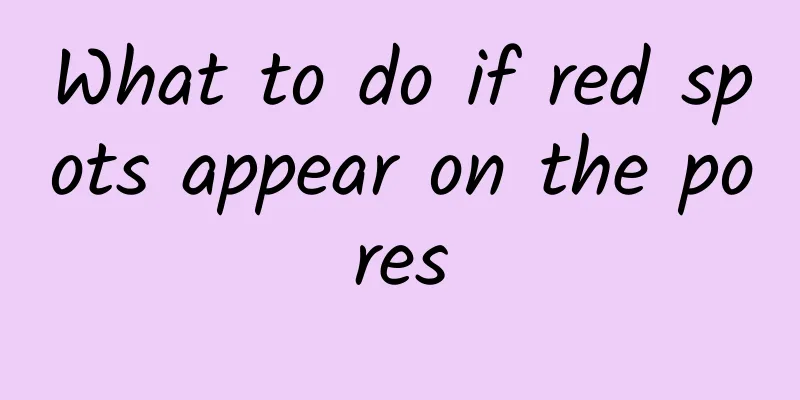Preexcitation syndrome surgery, understand the condition before surgery

|
Cardiac preexcitation syndrome is an extra channel in the heart. Generally, if it does not cause tachycardia, no treatment is required. If tachycardia occurs, it will cause palpitations and atrial fibrillation, and timely surgical treatment is required. Common methods include radiofrequency ablation. 1. Treatment methods Preexcitation itself does not require specific treatment. When concurrent supraventricular tachycardia occurs, the treatment is the same as general supraventricular tachycardia. When atrial fibrillation or atrial flutter occurs, if the ventricular rate is fast and accompanied by circulatory disorders, synchronized direct current cardioversion should be used as soon as possible. Lidocaine, procainamide, propafenone, and amiodarone slow conduction along the accessory pathway, which can slow the ventricular rate or convert atrial fibrillation and flutter to sinus rhythm. Digitalis accelerates conduction along the accessory pathway, while verapamil and propranolol slow down conduction within the atrioventricular node, both of which may significantly increase the ventricular rate or even develop into ventricular fibrillation, so they should not be used. If supraventricular tachycardia, atrial fibrillation or atrial flutter occurs frequently, it is advisable to take the above-mentioned antiarrhythmic drugs orally for a long time to prevent attacks. For patients whose atrial fibrillation cannot be controlled by drugs, whose electrophysiological examination confirms that the refractory period of the bypass is short or the refractory period of the bypass is shortened during rapid atrial pacing, or whose ventricular rate reaches about 200 beats/min during an attack of atrial fibrillation, there are indications for electrical, radiofrequency, laser or cryoablation after positioning, or surgical severance of the bypass to prevent attacks. 2. Disease Diagnosis Simple preexcitation has no symptoms. The concurrent supraventricular tachycardia is similar to general supraventricular tachycardia. For those with concurrent atrial flutter or atrial fibrillation, the ventricular rate is mostly around 200 beats/min. In addition to discomfort such as palpitations, shock, heart failure and even sudden death may occur. When the ventricular rate is extremely fast, such as 300 beats/min, the auscultatory heart sounds may be only half of the ventricular rate on the electrocardiogram, indicating that half of the ventricular excitation cannot produce effective mechanical contraction. When preexcitation is complicated by supraventricular tachycardia, the QRS complex is often not widened, but after the attack stops, there are characteristic electrocardiogram changes except for latent preexcitation. When preexcitation is complicated by atrial fibrillation or atrial flutter, the QRS complex is often widened, which should be distinguished from ventricular tachycardia. The preexcitation pattern on the electrocardiogram should be differentiated from bundle branch block, ventricular hypertrophy or myocardial infarction. The presence of shortened PR interval and preexcitation waves can confirm preexcitation. When the accelerated ventricular autonomous rhythm and sinus rhythm present interfering atrioventricular dissociation (especially when the ventricular rate is similar to the sinus rate), there may be short bursts of shortened PR interval and wide and deformed QRS complexes on the electrocardiogram, which resemble intermittent preexcitation. However, long records can often show an irregular PR interval and atrioventricular dissociation, which are not difficult to differentiate from preexcitation. 3. Preventive Care The prevention of preexcitation syndrome is mainly to prevent the recurrence of tachycardia. In order to effectively prevent the recurrence of tachycardia, two drugs should be used to simultaneously inhibit the forward and reverse conduction of the reentrant circuit, such as quinidine and propranolol, or procainamide and verapamil, which can achieve better results. Class IA and IC drugs such as amiodarone or Sol can prolong the irregularity between the atrioventricular accessory pathway and the atrioventricular node, which can effectively prevent the recurrence of tachycardia. Drug selection can be based on clinical experience, or the use of effective drugs determined by electrophysiological examinations can ensure the best effect in preventing recurrence. |
<<: What is cardiac preexcitation syndrome? You need to know the pathological cause.
Recommend
How to recover quickly from muscle contusion
Muscle contusion is quite common in our daily lif...
Can Siwu Decoction cure insomnia?
Siwu Soup is a relatively good health-preserving ...
Cervical myofasciitis
Bad habits can lead to the occurrence of cervical...
What to do if your skin is burned
We often encounter various problems in our lives,...
How to make raspberry wine
Raspberry is a wild plant fruit. It tastes very f...
What is the cause of weak kidney pulse?
As we all know, kidneys are one of the most impor...
How to treat facial hair follicles
Redness of facial hair follicles, commonly known ...
What to do about herpes zoster nerve pain?
Shingles is a disease caused by a viral infection...
Anal pimple is a bit painful
If a lump grows in the anus, the most obvious rea...
Swollen lymph nodes in the chin
Any disease has its own cause. After the disease ...
What is the cause of fever and high blood count?
Fever is a common phenomenon in our lives. There ...
Time for Japanese encephalitis vaccination
I don’t know if you have heard of Japanese enceph...
What to do if you keep suffering from insomnia
Insomnia is very harmful to human health. If you ...
What is spermatorrhea?
Spermatorrhea is also called slippery discharge, ...
How to measure body temperature to determine ovulation period
We can calculate the time of ovulation by calcula...









